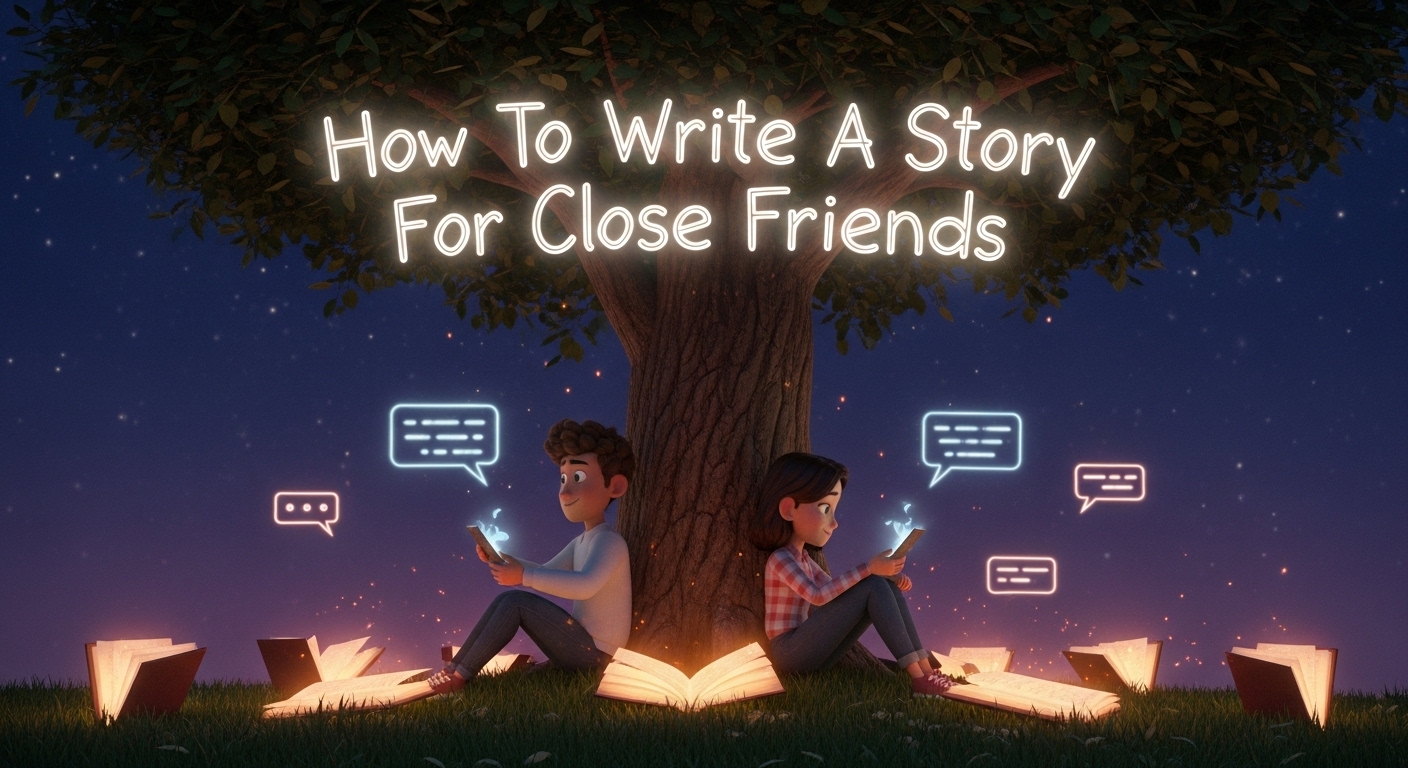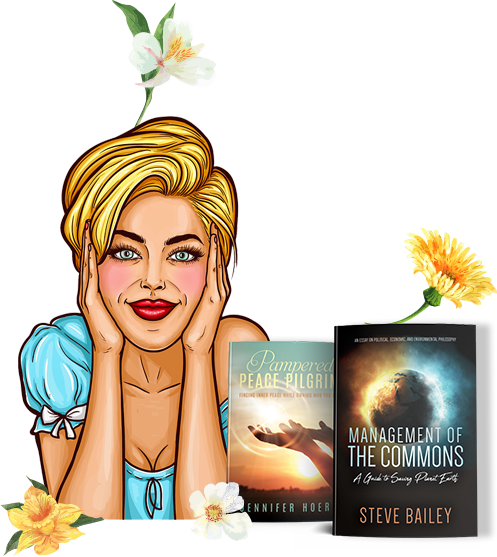How to Write a Story for Close Friends: A Heartfelt and Creative Guide
Publish Your Book View 50% off Pricing
Writing a story for close friends is one of the most personal and meaningful ways to express affection, gratitude, and shared memories. Unlike stories written for a general audience, a story meant for a friend can be deeply customized, emotionally resonant, and filled with shared experiences, private jokes, and mutual dreams. Whether you’re a seasoned writer or someone who just wants to give their friend a heartfelt gift, this guide will walk you through the process in a thoughtful and practical way—while also noting when professional assistance might be useful.
Table of Contents
ToggleUnderstand the Purpose of Your Story
Before you start writing, ask yourself why you want to write this story. Understanding the purpose will help shape the tone, length, and content of your narrative.
Common reasons include:
- Celebrating a birthday, wedding, or friendship anniversary
- Offering comfort during a difficult time
- Immortalizing shared memories or inside jokes
- Giving a personalized gift that feels authentic
- Exploring imagined “alternate lives” together
Once you understand the “why,” it becomes easier to decide the “how.”
Decide the Format of the Story
There’s no single format for a friendship story. It can take the shape of:
- A short fictional tale featuring your friend as the main character
- A memoir-style narrative focusing on a cherished memory
- A fantasy or sci-fi story based on inside jokes or shared fandoms
- A poetic prose letter written like a story
- A hybrid that mixes reality and imagination
Tip: Choose a format that best matches your writing style and your friend’s personality. For example, if your friend is whimsical and fun-loving, a lighthearted fantasy or comedic short story might be perfect. If they’re sentimental, a nostalgic, true-to-life narrative may work better.
Gather Memories and Inspiration
Writing a personal story requires digging into shared experiences and emotional connections. Take some time to brainstorm:
- Memorable trips, conversations, or events
- Funny or embarrassing moments you experienced together
- Shared dreams, goals, or interests
- Things your friend has said that stuck with you
- Habits or traits that make them unique
Keep a list of moments, quotes, or quirky traits you want to include. This process also helps generate narrative material organically.
Choose a Theme or Message
Your story will resonate more deeply if it revolves around a central message or emotional core. It doesn’t need to be dramatic or grand—it can be something simple and true.
Possible themes include:
- The value of true friendship
- Overcoming challenges together
- Adventure and loyalty
- Support in hard times
- Growth and change
Knowing your theme early helps structure the story with clarity and emotional impact.
Create Characters Based on Real People
If you’re writing fiction, you can either include your friends as themselves or create characters inspired by them. Be mindful of how you represent them—this is meant to be a gift, not a parody (unless your humor is shared and understood).
Character Tips:
- Use your friend’s real name or a nickname if you want the story to feel intimate.
- Include signature habits, catchphrases, or quirks.
- Make them the hero of the story. Let them shine, solve problems, or embark on meaningful adventures.
- If you’re blending fiction and reality, ground your character in traits that your friend recognizes as their own.
Build a Simple Plot
You don’t need a complicated or lengthy plot to create a compelling story for a friend. In fact, simplicity often makes the story more effective. A basic story structure might include:
- Introduction: Set the scene. Introduce the friend/character and their world.
- Conflict or Challenge: Introduce a light problem, decision, or journey.
- Climax: The emotional or narrative high point.
- Resolution: How the situation is resolved or how the character changes.
- Ending: A heartwarming or humorous closure that ties back to your friendship.
Example: Your friend is a time traveler who keeps accidentally ending up in your funniest shared memories. She must figure out how to return to the present, but only after reliving the best parts of your friendship.
Incorporate Humor, Emotion, and Personal Touches
One of the biggest benefits of writing for someone close to you is the ability to include shared language, in-jokes, nicknames, and emotional callbacks. These details make the story feel special and unique.
Ideas for personalization:
- Use pet names or inside jokes.
- Refer to real-life events with a fictional twist.
- Add custom illustrations or photos if you’re artistic.
- Reference songs, quotes, or hobbies you both love.
Write the First Draft Without Overthinking
This is the part where many people get stuck. When writing for someone you love, you may feel pressure to make it perfect. Remember: sincerity matters more than perfection.
Start writing as if you’re talking directly to your friend. Let your tone be natural, conversational, and honest. Don’t worry about structure or grammar in the first draft. Focus on getting your thoughts and creativity out.
Edit for Clarity and Flow
Once you’ve written the first draft, take a break. Then return to it with fresh eyes to make edits. Look for:
- Sentence flow and pacing
- Grammar and spelling
- Clarity of character and plot
- Emotional or thematic consistency
- Unintentional repetition or confusion
Professional Tip: If the story is long or you’re unsure of your editing skills, consider hiring a professional editor or proofreader. Many offer affordable rates for short pieces or personal stories. They can help polish the work without removing your personal voice.
Get a Professional Layout or Illustration (Optional)
If you want to make your story look like a printed book or keepsake, professional services like freelance illustrators, layout designers, or formatting experts can help. They can turn your story into a digital or physical masterpiece with:
- Custom artwork
- Personalized cover design
- Page formatting
- Binding options for printing
Even a short story can feel magical when designed like a real book. If you’re creating a birthday or memory gift, this is a thoughtful extra step.
Consider Collaboration or Feedback
If the story involves shared friends or moments, ask others for input (if it won’t ruin the surprise). They might remember details you forgot or offer fun ideas to include. Collaboration can enhance the emotional impact of the final story.
What If You’re Not a Confident Writer?
You don’t have to be a novelist to write a great friendship story. But if you’re feeling stuck or want to bring your idea to life more professionally, ghostwriters or freelance writers can help. You provide the memories and vision—they shape it into a beautifully written piece. Look for services that offer personalized storytelling or memoir writing. These professionals are especially helpful if:
- You’re short on time
- You have a great idea but struggle to write it
- You want a polished, edited final piece
Just be sure to choose a writer or editor who respects your voice and the emotional core of your story.
Conclusion
Writing a story for a close friend is a rare and meaningful gift. It’s not just about the words on the page—it’s about the memories, the emotions, and the relationship behind those words. Whether it’s a heartfelt tribute, a wild fictional journey, or a blend of the two, the care you put into the story will shine through. So grab a notebook or open your laptop, and start writing something beautiful for the people who matter most.
FAQs
Q: Does my story have to be long to be meaningful?
No. Even a short story can be incredibly impactful if it’s heartfelt and personal.
Q: Should I get my friend’s permission to include them?
If the story is fictional and clearly meant as a tribute or gift, you usually don’t need permission. But avoid including sensitive or private details without their consent.
Q: What if I’m not good at writing?
Consider writing a rough version and asking a friend, editor, or ghostwriter to help you shape it. Your personal voice is the most important part.
Q: Can I turn this story into a keepsake gift?
Yes! With the help of illustrators, layout designers, or book formatting experts, you can turn your story into a printed or digital book.





